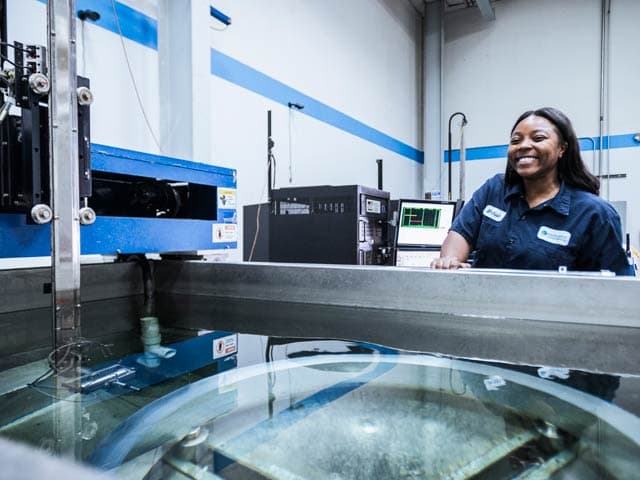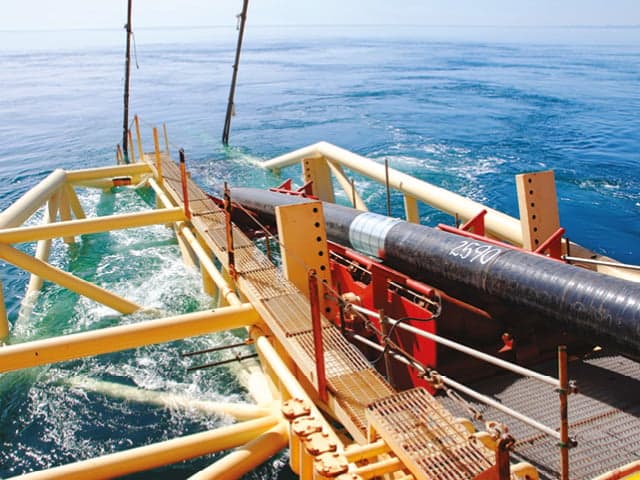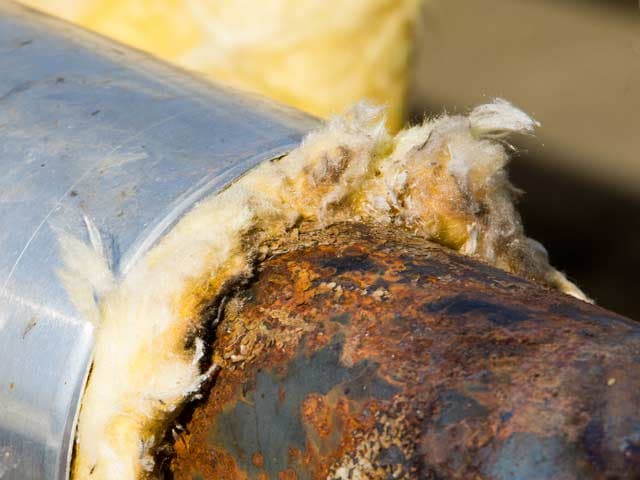Immersion Ultrasonic Testing (IUT) Services for Oil & Gas
Get faster, more reliable pipeline inspections with Element’s advanced Immersion Ultrasonic Testing (IUT) services. Our specialized girth weld inspection combines precision robotics and controlled testing environments to catch even the smallest defects before they become costly problems. Save time and money with our standardized global procedures that ensure consistent, accurate results every time.

What is Immersion Ultrasonic Testing (IUT) Services at Element?
Immersion Ultrasonic Testing is an advanced non-destructive testing method that uses high-frequency sound waves in a controlled environment to detect and validate weld defects. At Element, we specialize in IUT specifically for pipeline girth welds in the Oil & Gas industry, where accuracy is critical. Our process combines automated testing with detailed manual inspection in a controlled environment, followed by physical confirmation of our findings. This through approach gives you complete confidence in your pipeline integrity.

What Can Element Offer You For Immersion Ultrasonic Testing (IUT) Services for Oil & Gas?
Components and materials we test
Components and materials we test
Element specializes in testing pipeline girth welds, with particular expertise in various base and welding materials, bevel designs, and CRA applications.
Key tests offered
Key tests offered
- Identification of:
-
- Cracking
- Inclusions
- Incomplete penetration
- Lack of sidewall fusion
- Porosity
- Other weld strength defects
- Double-sided scanning
- Critical evaluation of data and indications
- Probability of Detection (PoD) validation
- Physical sectioning confirmation
Methods and solutions offered
Methods and solutions offered
Our flexible IUT process includes:
- Detailed requirement assessment
- Custom procedure development
- Production of dedicated calibration block, including sensitivity and calibration Flat Bottom Holes
- Pre-scanning material optimization
- Standardized scanning and reporting
- We utilize high-accuracy robotics and a controlled immersive testing environment to ensure superior detection of smaller defects and verification of clean areas.
Which labs we offer this service at
Which labs we offer this service at
Our state-of-the-art facilities at Element Rancho Dominguez Element Temple Close lead our IUT capabilities for pipeline girth welds, as part of our extensive global laboratory network. Our advanced testing centers in oil and gas hubs around the world ensure convenient support wherever your operations are based. Our high-accuracy robotics and controlled testing environment deliver faster results without compromising precision.
Standards we test to and materials we test
- DNVGL-ST-F101
- DNVGL-RP-F118
- Pipeline girth welds
Your Challenges, Our Solutions
Risk of costly weld failures
Meeting critical project timelines
Small defect detection challenges
Standards compliance complexity
Why Choose Element

Global standardization
Advanced technology leader
Comprehensive validation
Industry-specific expertise
Frequently asked questions
What makes IUT particularly good at finding small defects?
Our high-accuracy robotics and controlled immersion environment allow us to detect even tiny flaws that might be missed by other methods. This is especially important for clarifying clean areas and ensuring long-term pipeline integrity.
How does your validation process work?
For validating our testing accuracy, we use deliberately flawed seeded test welds. These are first examined by the automated ultrasonic testing system under qualification, then inspected using our IUT technology, and finally physically sectioned to confirm the exact size of known flaws. This thorough process ensures the reliability of our inspection methods

Explore our global network of labs and find your nearest location
VIEW ALL LOCATIONSRelated services

Oil and Gas Testing
Element offers a wide range of Oil & Gas testing services, including mechanical and NDT testing, structural and corrosion testing, and failure analysis. Learn more.

Energy Coatings Testing Services
Protect your critical energy assets with Element's specialized coatings testing. We simulate extreme offshore and pipeline conditions to validate performance, prevent costly failures, and ensure compliance. Learn More.

CUI Inspection - Corrosion Under Insulation
Identify hidden corrosion under insulation before it leads to costly failures. Element's advanced CUI inspection protects infrastructure & extends equipment life, meeting industry standards. Learn More.

Ultrasonic Testing (UT) Services
Detect hidden defects with Element's ultrasonic testing services. Our expert teams provide both contact and immersion UT inspection to verify component integrity, meet standards, and prevent failures.
